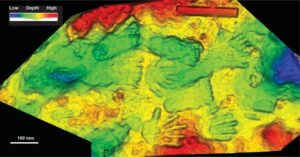19th September: A sequence of hands and footprints uncovered on the Tibetan Plateau has been regarded as possibly the oldest work of art by an international effort. The prints are three to four times older than the famous cave paintings in Indonesia, France, and Spain, and come from the middle of the Pleistocene era, between 169,000 to 226,000 years ago. Is it art?

Handprints are far more infrequent than footprints in the human record. Their presence links the Tibetan panel to a legacy of parietal art, or immovable art, exemplified by hand stenciling on cave walls. The oldest known examples of this type of art may be discovered on the Indonesian island of Sulawesi and in Spain’s El Castillo cave. The Chauvet cave paintings in France, which are roughly 30,000 years old, are nearly current in light of the Tibet discoveries.
The researchers employed uranium-series dating to figure out when the art panel was created. They estimate that the youngster who produced the footprints was around 7 years old, while the child who did the handprints was roughly 12 years old.
However, the question of the painters’ species is more crucial than their age. Did they belong to the Homo sapiens genus? Is this a long-dead hominin? According to one idea, they were Denisovans, a mysterious group who were ancient Neanderthal relatives, as evidenced by recent skeleton remains discovered on the plateau.
The art panel advances the argument for the earliest hominid occupancy on the Tibetan Plateau, even if their particular identities will never be established. Equally difficult for the researchers to answer is the age-old question of what defines art, which no amount of uranium dating will ever answer.







Leave a Reply